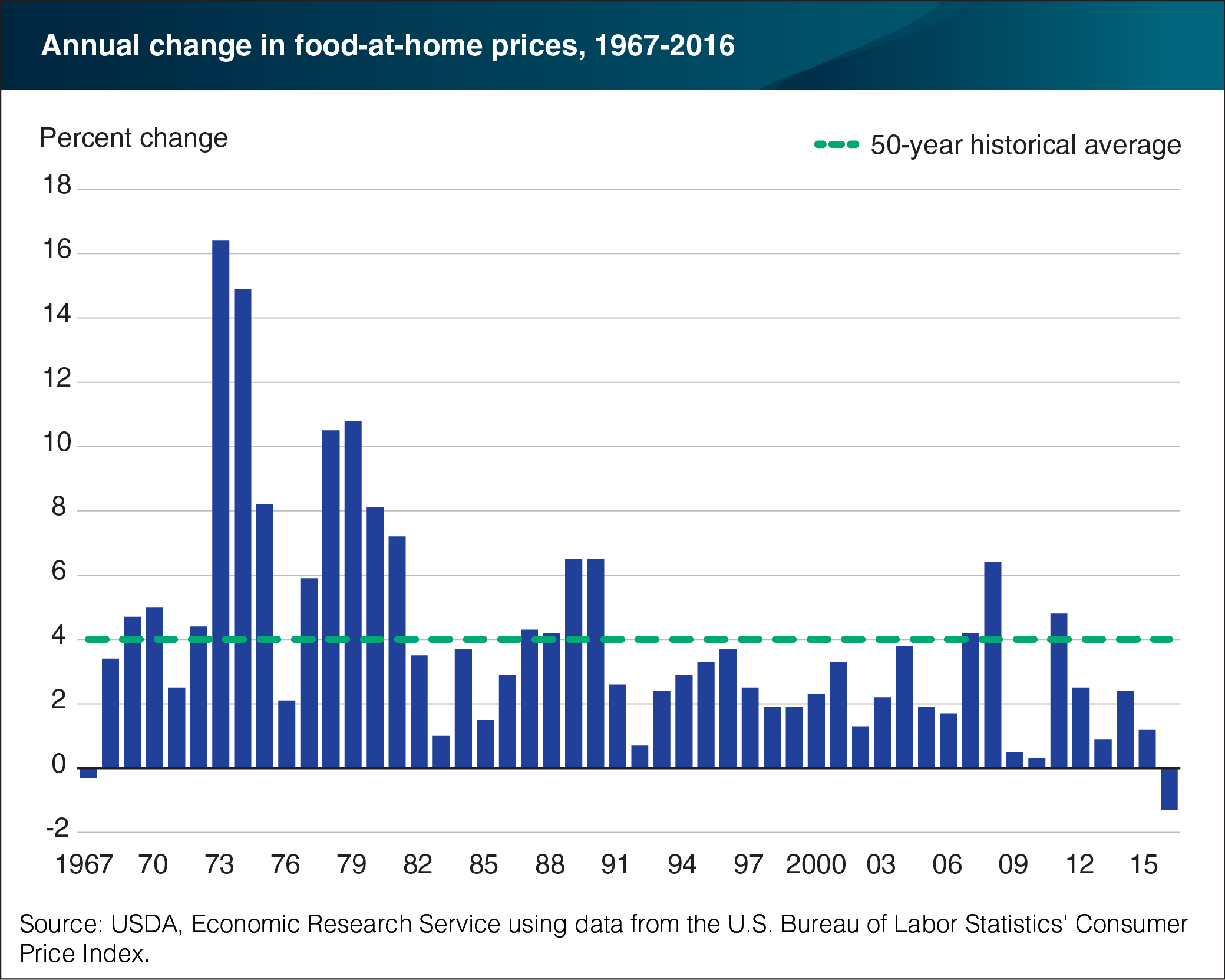Retail food prices in 2016 declined for the first time in nearly 50 years
- by Annemarie Kuhns and David Levin
- 3/27/2017

In 2016, retail food prices decreased by 1.3 percent—the first time since 1967 that grocery store (food-at-home) prices were lower than those in the year before. Over the last 50 years, food-at-home prices have, on average, risen 4 percent annually. However, year-to-year price changes have varied over time. High food price inflation in the 1970s—price increases as large as 16.4 and 14.9 percent in 1973 and 1974—was precipitated by food commodity and energy price shocks, whereas food price increases were minimal in 2009 and 2010, as the 2007-09 recession put downward pressure on prices for many goods, including food. The unusual decline in retail food prices in 2016 can be attributed to a culmination of factors. Declining prices for retail meats, eggs, and dairy during that year are largely a story about rising commodity production. Lower transportation costs due to low oil prices and the strength of the U.S. dollar also placed downward pressure on food prices in the first half of 2016. This chart appears in “Consumers Paid Less for Grocery Store Foods in 2016 Than in 2015” in the March 2017 issue of ERS’s Amber Waves magazine.

